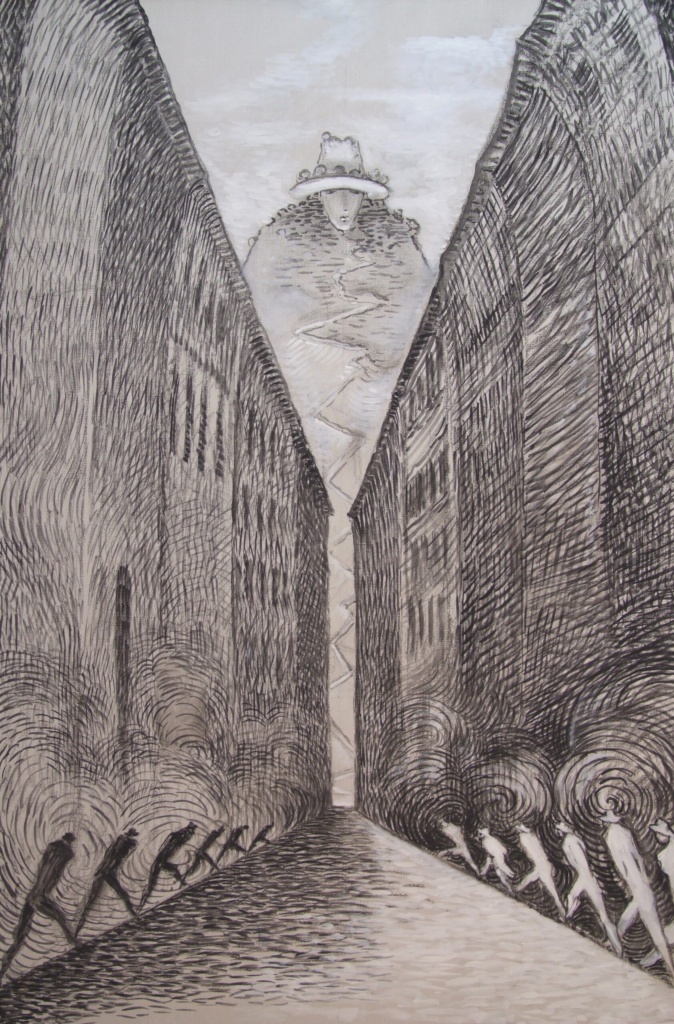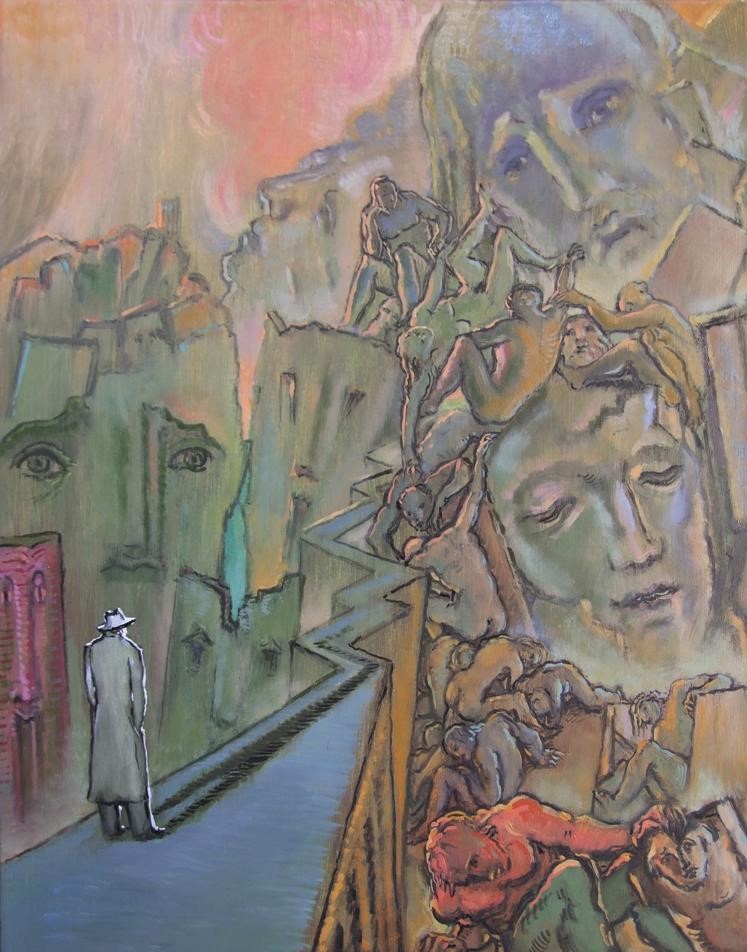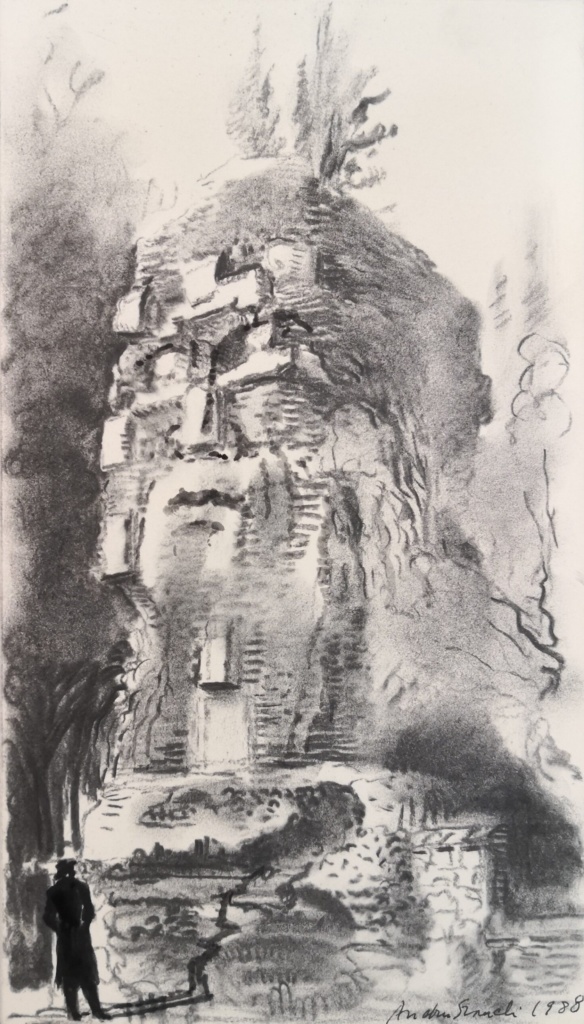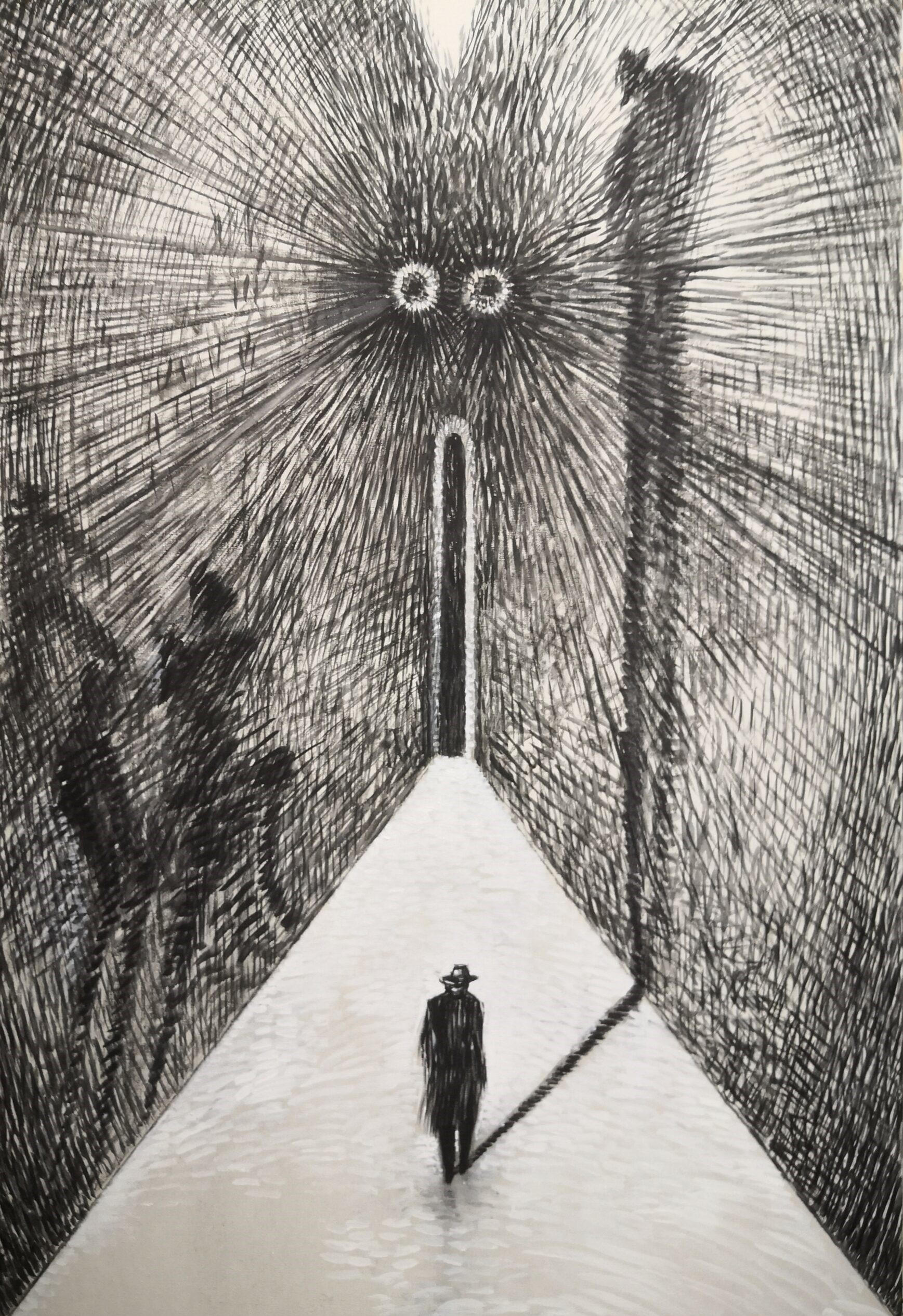Cover: Andrea Granchi, La forma della solitudine, 2020. ”The form of solitude”, tempera, charcoal, and oil on the prepared base (150×100). Courtesy andreagranchi.com/Archivio Studio Granchi.
The past months have reminded us of life’s uncertainty. The covid pandemic, which has been going on for over a year, has left us with a lasting impression. Italy, like the rest of the world, is still amidst a crisis.
Andrea Granchi, a Florentine artist and academic, has depicted fears and emotions caused by the pandemic. It’s easy to identify with the artistic work’s atmosphere. A massive wall rules over a city, and its citizens have escaped into their homes. The works remind me of Giovanni Boccaccio’s poetry of a time when ten young people run from the plague into a villa outside of their home city. They spend time telling stories and observing human nature from within.


Andrea Grachi, Bianco e Nero, destini paralleli, 2020. ”Black and white, parallel destinies”, charcoal, tempera, and oil on canvas (150×100). Courtesy andreagranchi.com/Archivio Studio Granchi.
In Granchi’s work ”Black and white, parallel destinies”, a group of people is rushing to escape an unknown danger.
In a deserted city, the pedestrians follow the same path. Some pass on the shadowy side, some journey in the light. However, their destination is the same, towards the hills of light, towards oneself and the unknown, perhaps towards God. The individual walkers’ words form a common story, and their silence an inevitable truth.


Ten days turn the stories of ten storytellers into a hundred, and hundred days into a thousand. Instead, singular words are left waiting to be heard and are echoed to deaf walls, that once possessed ears and eyes. And they jab back.
In Granchi’s works, a familiar hat-headed man continues his journey from one opera to another, being a part of the audience, and the Renaissance city’s milieu. It drills itself deep into the human mind and into an experience, in which a person follows his own unique path reflecting on his fears and memories. The faces surrounding such a person turn into sculptures and masks, that slowly crumble onto the deserted city’s piazza.
The pandemic’s atmosphere comes culminates in Granchi’s work ”A man who’s watching the collapse of what’s taken as granted”.


In Andrea Granchi’s work not only does the shadow follow man, but the man follows its shadow. One has to face his current and past being, face that of the whole humanity, and throw himself in front of it.


Andrea Granchi, Il Presente di fronte al Passato, 1988. ”Present in the face of past”, charcoal and watercolor on cotton paper (28×16). Courtesy andreagranchi.com/Archivio Studio Granchi.


Text: Merita Koskimies
Photos: Courtesy andreagranchi.com/Archivio Studio Granchi. http://www.andreagranchi.com/



